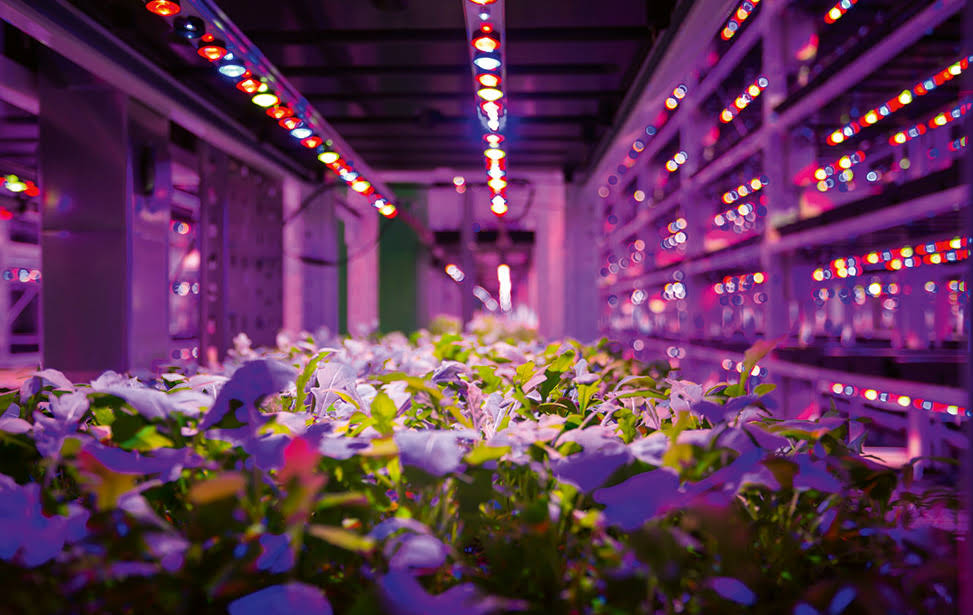- English

Once seen as a silver bullet for sustainable and food production, sales of organic produce have fallen by 2.1% over the past year and research has shown that if countries like the UK were to go fully organic it would increase greenhouse gas emissions and reduce biodiversity.
In opposition to this trend, the market for controlled environment agriculture has been steadily increasing and is predicted to exceed £9 billion worldwide by 2026. Whilst vertical farms do not grow in soil, they do allow for dramatic reductions in water use and can completely cut out pesticide use and food waste. Many vertical farms suggest that their produce should be considered organic
In this article, we review why produce grown in vertical farms doesn’t qualify as organic and look to some of our clients to see some of the reasons it should or shouldn’t be
According to UK and EU law, fresh produce can only be considered to be produced organically if the farm is registered with an approved control body, such as Organic Farmers & Growers or the Soil Association and must undergo regular inspections to ensure they meet their standards.
Standards such as using non-GMO seeds, the responsible use of resources, maintenance of biodiversity, and the maintenance of local water quality. Crucially, to be classified as organic, produce must be grown in soil and be part of a sustainable effort to manage soil quality. As a result, anything grown using hydroponics or aeroponics as is the case with vertical farming can’t be classified as organic.
The Overlap Between Organic and Vertical Farms
Despite this many vertical farms suggest they meet many of the other standards needed to be classified as organic. Firstly, because crops are grown in a sterile controlled environment, the risk of contamination is significantly lower compared to all existing alternatives, thus vertical farms don’t need to use pesticides or herbicides. It is to note that organic produce may still contain some pesticides but in quantities that are below thresholds set by the industry body.
Secondly, as factors affected by ecosystems such as atmosphere, animals, bacteria, or soil quality are negligible in vertical farms, there is little reason to use genetically modified seeds as non-GMO as heritage seed varieties can thrive without these external stressors. There is however a vibrant research community that is looking at optimizing the cultivars and varieties for this new growing environment.
Vertical farms have a range of advantages when it comes to the use of natural resources compared not only to traditional farms but also to organic farms. They can use up to 95% less water than traditional farms due to their ability to recycle it. Using state-of-the-art LED lights like Kroptek’s range of LEDs allows for considerable gains in energy efficiency, resulting in lower energy use. Vertical farms have a much smaller land footprint relative to their yield, so they use far less land to produce more food. Finally, vertical farms free the supply chain from having to grow in specific locations as food can be grown within a walking distance from its consumers in urban areas for 12 months a year. This has a very big impact on reducing the food chain’s carbon footprint as it eliminates the need to transport refrigerated produce across thousands of miles.
Whilst not allowed to be classified as such, these regulations are not identical globally. Under the Singapore Standard 632 introduced in 2019, produce grown in urban vertical farms can be classified and sold as organic. That means the produce grown using Kroptek’s LEDs by vertical farms like this can be deemed organic.
The Organics of Tomorrow
It is unlikely that the classifications in the EU or UK will change anytime soon to reflect the type of classification on offer in Singapore. But there is a lot the vertical farming industry can learn from the experience of the organic farming industry.
Crucially, both movements are driven by the mission to create a more sustainable food system that is better for the consumer than the modern intensive farming techniques developed in the second half of the 20th century. Whilst sales of organic produce have fallen over the past year since the movement began many of the principles of organic farming have been integrated into conventional farming methods. Using fewer pesticides, monitoring water maintenance, and improving biodiversity on farms has become common practice for many farms.
With greater awareness of the benefits and the methods of organic farming, its popularity soared over the last 30 years. It is clear that the lesson to learn from organic farming is that increasing public awareness of the role vertical farms can play in climate-orientated efforts is key. From reducing air miles, localising food production, and improving food security, to being able to grow regardless of climate and extreme weather conditions; boosting public awareness of the value of vertical farms is a key lesson to be learnt from organic farming.